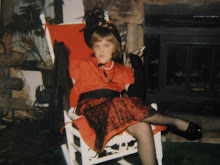After your first 10 minutes in retail, you start to realize there is something up with this SALE word. I call it a 4 letter word for a good reason, and I'm going to get up on my pink soap box and tell you why.
We live in a culture that is incredibly sale-obsessed and sale-saturated. In general, I am opposed to sales. "Oh, of course you would be, you're a retailer, you want money!" you might be thinking. Nope. Although, we all want and need a bit of money, no? Why I hate sales is because they are contributing to the bastardization of American retail. Sure, everyone loves a deal. But there are deals, and then there are SALES.
Sales are becoming more and more tricks to get you to buy. You are "saving". What are you saving? A so-called discount off of an imaginary inflated price. You think the big box stores are out to help you? You think THEY are taking a hit so you can get a deal? No, they are making you THINK you are getting a deal.
There are three ways that stores can price merchandise.
- Set a price that is in line with current market value of an item, assuring a profit for the store to maintain operation, payment of the vendor for the item they manufactured, and payment for the shipment of the item to the location. This price is fair to the consumer AND fair to the retailer. Because of this, to have a 'sale', and reduce the price means the retailer is the one taking a hit--and it is best to avoid doing that unless the item is damaged or outdated in some way.
- Set a price the exact same way--but give in to pressure to 'have sales', and thus cut margins down to bare bones level, jeopardizing the health of the retailer.
- Set a price that far, far exceeds the fair market value of an item, take a large percentage 'off' of that price, make the consumer think they have 'saved' all of that money, and the final price is closer to what the true market value of the item is.
Method #1 is the one most favored by the independent mom-and-pop single location stores. Method #3 is the one most favored by big box mass market retailers--you know who they are. Look at your Sunday circulars for a clue.
Remember that retailers set the prices for their items. When I first opened, a local shop that was around for just a few months let me know how I should do things. I should mark everything way up and then have sales. I thought that was stupid, and I still do. Why play this game with customers?
When you're running a store for a while, you start to see that some customers expect you to play the big box sale game. They don't get it that it's a brainwashing to make you think you are saving money. Instead, if you 'dont' have sales', you are a greedy expensive store, selfish and anal. Poppycock! What happened to being FAIR about pricing? They expect you to give it all away, yet they still expect to see you there so they can come in for their fix. And who pays the rent when the inventory is given away, huh?
It's not something you think about unless you own a store, or unless someone who owns a store writes a big ranting blog post on it for you to read. I was definitely bitten by that SALE bug many times in my past. I once went to a store where it was a week before Christmas, and all their Christmas was 50% off. Oh, was I excited!!! WOW! And now when I look back on it, it occurs to me that $25 was a rather high price for a Christmas tree ornament I was happy to get for $12.50. It should've been $12.50 to start with--but the allure of getting away with getting a $25 item for 50% off was too much.
And so retailers continue to mark up to mark down. Every week someone asks me about sales. What's better--an item marked $20 on sale for 75% off or the same item marked $5? I know most people don't want to think about math when they shop, but you really need to.
I was reading our online local newspaper this weekend, AnnArbor.com and read an article about upscale retailer Von Maur. I love Von Maur, it's a lovely shopping experience, and they have great stuff, and no, you don't have to be rich to shop there. The article, which you can read in full here http://www.annarbor.com/business-review/ann-arbor/, says...They’re also known for carrying high-end merchandise that doesn’t go on sale. Instead, items go through a series of permanent markdowns.
“It’s always been our strategy to price fairly and not play the (sale) rollercoaster,” said Amy Davis, marketing manager for the Iowa-based chain.
That means days like Black Friday don’t play out differently in the store, which opened at its normal time and featured fresh markdowns for customers - but none of the coupon- or sale-induced shopping frenzy that co-anchors Sears, Macy’s and JCPenney generated.
“Being non-promotional and staying true to what we do has been successful for us,” Davis said. “… There’s no need to change that strategy. We think customers appreciate that. It sounds like a simple approach, but it works for us.”
Yes! Yes! Finally a major retailer comes out and says this, and talks about the 'sale rollercoaster'. This craziness has to stop. So no, I don't have 'sales', because I don't play the game. I price fairly and if something is past it's prime, it's marked down. I am not going to take a $75 lamp, mark it at $250, and then have it ON SALE for 50% off. As we said in the early '90s, "Homey don't play dat".


No comments:
Post a Comment